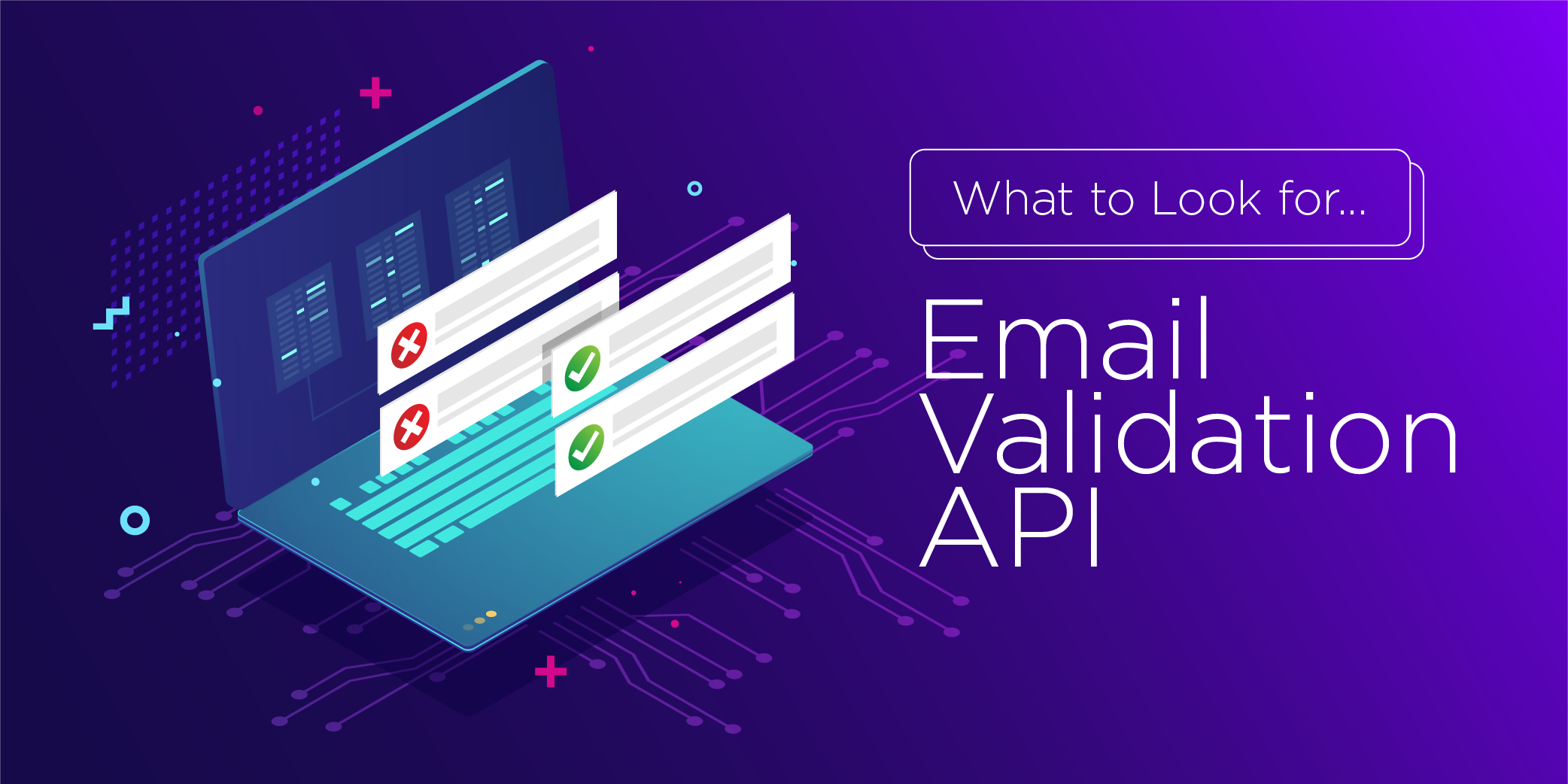 Why Businesses Use an API for Email Validation
Why Businesses Use an API for Email Validation
Every business relies on accurate email data, whether you’re sending marketing campaigns, onboarding new users, or preventing fraud. But even the best email lists degrade over time. Typos, disposable domains, and inactive addresses can quietly damage deliverability and waste resources.
An email validator API solves this by checking email addresses in real time, directly within your systems. It acts as a gatekeeper, stopping invalid or risky emails before they ever enter your database. The result? Cleaner data, fewer bounces, and a stronger sender reputation.
Core Features to Look For
When evaluating an email verification API, focus on the features that impact accuracy, performance, and security. The right solution should fit seamlessly into your workflow and scale with your business.
1. Accuracy
Look for a provider that uses multiple verification layers such as syntax, domain, MX, and SMTP checks to ensure each result is reliable. Accuracy should be backed by clear testing results, not marketing claims.
2. Real-Time Validation
A real-time email validation API allows you to verify addresses at the point of capture. Whether it’s a sign-up form or checkout page, this instant feedback prevents bad data from entering your system and reduces bounce rates from day one.
3. Scalability and Speed
Email verification shouldn’t slow you down. A strong API should handle high volumes of requests quickly and reliably, even during peak usage. Check the provider’s uptime statistics and processing limits to ensure consistent performance.
4. Seamless Integration
Integration flexibility is key. Look for APIs that provide clear documentation, SDKs, and sandbox testing. RESTful design, predictable response codes, and straightforward authentication make it easy for developers to plug in and go.
5. Security
Email addresses are personal data — so your API must handle them securely. Choose a provider that uses encrypted connections (HTTPS), data minimisation, and robust security protocols. A transparent approach to data handling builds long-term trust.
How to Compare Providers
Not all email validation APIs are created equal. To find the right fit, compare the following criteria side by side:
- Accuracy rates: How transparent is the provider about testing and performance data
- Documentation: Is the API well-documented, with clear examples for developers?
- Support: Does the provider offer responsive technical support and onboarding help?
- Pricing: Are you paying per request, per result, or by tier? Look for predictable pricing that scales with your usage.
These factors will determine not just the quality of your verification results — but also how efficiently your team can deploy and maintain the integration.
Real-Time vs. Bulk Validation
When should you use an API instead of uploading lists for bulk validation?
- Real-time validation is ideal for web forms, CRM integrations, and app sign-ups where speed and instant accuracy matter.
- Bulk validation is best for cleaning existing lists at scale, before large campaigns or database migrations.
Many businesses use both — APIs for ongoing protection and bulk uploads for regular maintenance. Together, they keep your data consistently clean and reliable.
Why It Matters
Investing in the right email validator API goes beyond improving data quality. It helps you:
- Protect your sender reputation
- Reduce bounce rates and wasted spend
- Improve email deliverability
- Prevent fraudulent sign-ups and spam accounts
- Maintain a trusted, high-performing database
Clean data means your messages reach real people — and your email marketing, CRM, or fraud prevention systems perform at their best.
Ready to Improve Your Data Quality?
Choose a validation partner you can trust.
- Use our MORE API for real-time email validation — verify addresses instantly at the point of capture to keep your systems clean and reliable.
- For deeper email intelligence, explore INSIGHT — a comprehensive API designed for data providers who need to assess email quality, risk, and value at scale.
Together, these solutions give you accurate, actionable data — helping your business prevent fraud, protect deliverability, and maintain a trusted database.
FAQ: Email Validation APIs
- What is an email validation API?
An email validation API is a tool that verifies email addresses in real time or in bulk through an automated connection between your system and a verification service. It checks syntax, domain, and server responses to confirm if an address can receive messages — helping maintain clean, reliable data.
- How does a real-time email validation API work?
A real-time API instantly analyses an email address the moment it’s entered into a form or database. It runs multiple checks — including domain verification, MX record validation, and SMTP responses — and returns a result within milliseconds.
- Why should I use an API instead of manual list cleaning?
Manual cleaning only removes bad data after it’s already in your system. An API prevents invalid emails from being added in the first place, saving time, reducing bounce rates, and improving deliverability.
- What’s the difference between an email validator API and bulk email verification?
APIs handle one address at a time, ideal for real-time sign-up or onboarding scenarios. Bulk verification processes large lists — perfect for periodic cleaning of marketing databases. Using both methods provides complete data protection.
- How do I choose the best email validation API for my business?
Compare providers by their accuracy rates, response speed, integration documentation, uptime, and data security measures. Transparent performance reporting and responsive support are key indicators of a reliable service.